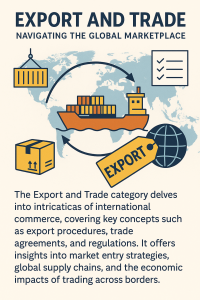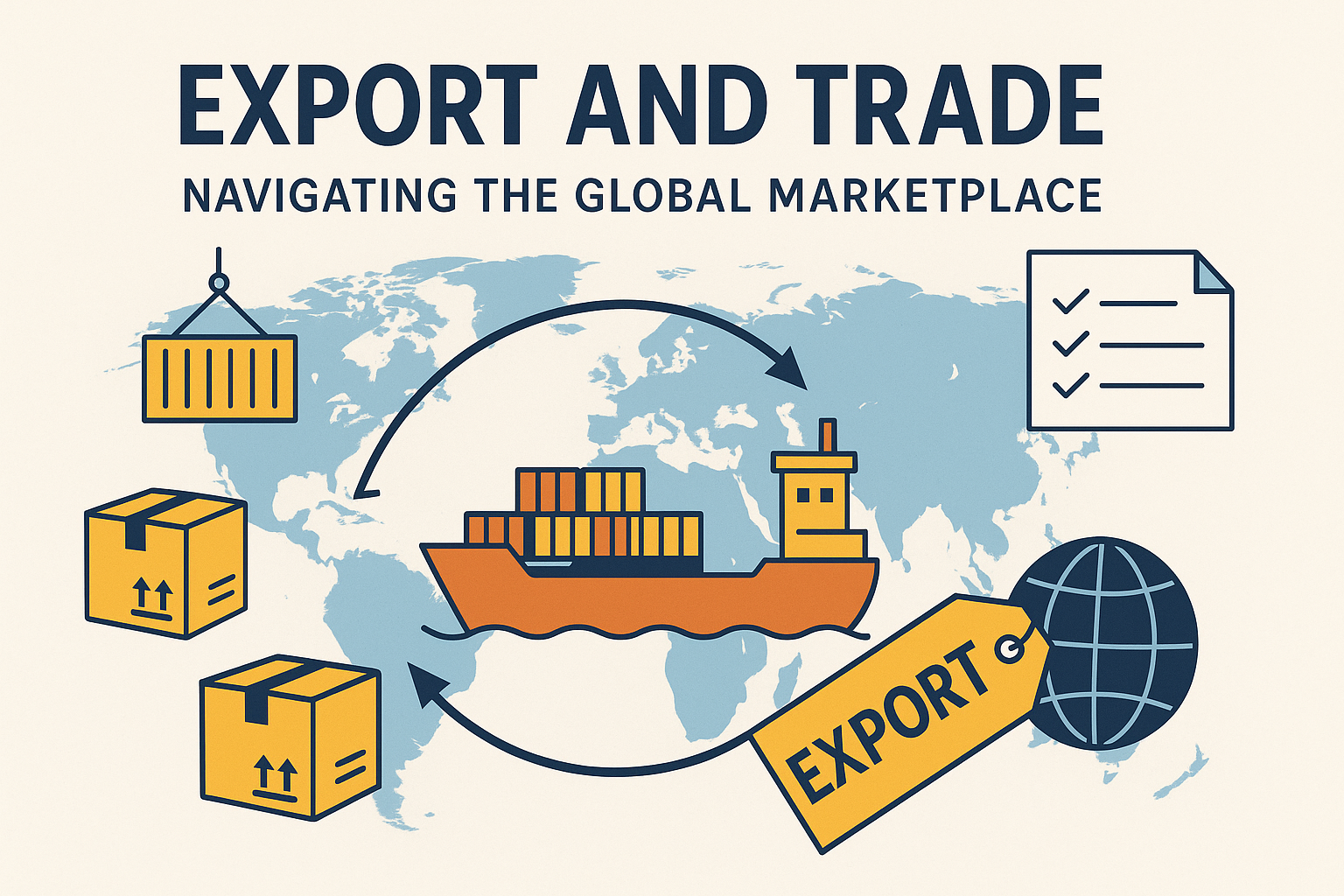 In today’s rapidly evolving economic climate, keeping up with global export and trade updates is not just a choice — it’s a necessity. Businesses large and small must stay informed about international market conditions, tariffs, supply chain disruptions, and emerging trade agreements to remain competitive and compliant. As the global marketplace becomes increasingly interconnected, even the smallest regulatory or political change in one country can ripple across borders, impacting pricing strategies, shipping logistics, and customer demand worldwide.
In today’s rapidly evolving economic climate, keeping up with global export and trade updates is not just a choice — it’s a necessity. Businesses large and small must stay informed about international market conditions, tariffs, supply chain disruptions, and emerging trade agreements to remain competitive and compliant. As the global marketplace becomes increasingly interconnected, even the smallest regulatory or political change in one country can ripple across borders, impacting pricing strategies, shipping logistics, and customer demand worldwide.
Recent months have seen significant shifts in global trade policy. Countries are adapting to new economic alliances, realigning trading partners, and placing emphasis on sustainability and digital transformation. For instance, the European Union is enforcing stricter carbon border taxes, while nations like India and the UAE are forming bilateral trade agreements to enhance regional economic strength. These movements are reshaping how exporters operate and which markets offer the most promise for growth.
Exporters are also facing increasing pressure to adopt ESG (Environmental, Social, and Governance) practices. Global buyers are not only looking for the best price and quality but also want to ensure that suppliers meet ethical labor standards and reduce their environmental footprint. This shift means that export-driven businesses must now include sustainability as part of their competitive strategy.
Technology continues to play a transformative role in trade. Platforms that offer real-time shipment tracking, customs documentation automation, and data analytics are helping businesses gain more control over their operations. With AI-driven market analysis, exporters can now predict demand trends, identify untapped markets, and optimize pricing based on dynamic global factors. Companies using such tools are not only responding to changes faster but are often setting the trend.
Meanwhile, geopolitical tensions continue to influence trade corridors. The Red Sea conflict, for example, disrupted key shipping routes, causing delays and increased freight costs. Trade professionals must now build more resilient supply chains by diversifying sourcing and distribution strategies. Exporters are also advised to invest in local partnerships in key markets to buffer against political instability or logistic bottlenecks.
For entrepreneurs and established exporters alike, this is a pivotal time to reassess their strategies. Staying updated on trade news, engaging with government export promotion councils, and participating in international expos or virtual B2B meetings can open doors to new opportunities. Businesses that are proactive in understanding market signals will find themselves better prepared not just to adapt, but to thrive.
In conclusion, navigating the world of exports and trade requires more than just knowledge — it demands agility, foresight, and a willingness to innovate. Those who stay informed and evolve with global trade dynamics will continue to lead and succeed in this ever-competitive marketplace.





